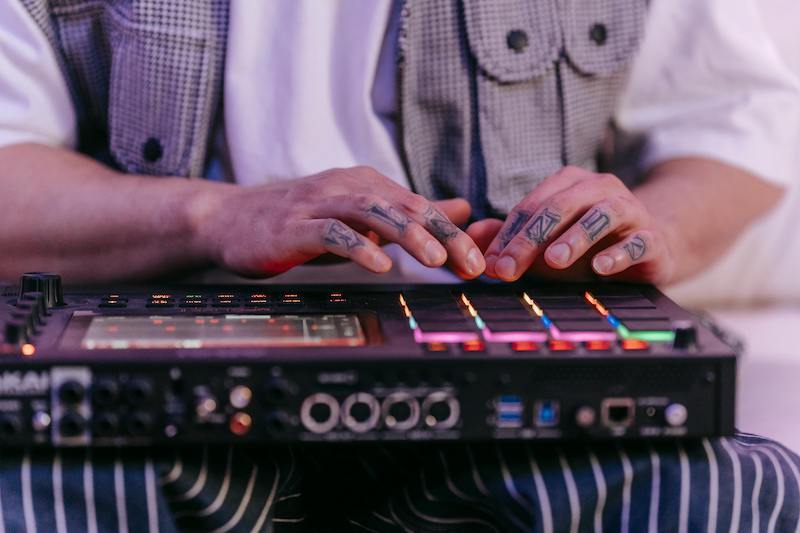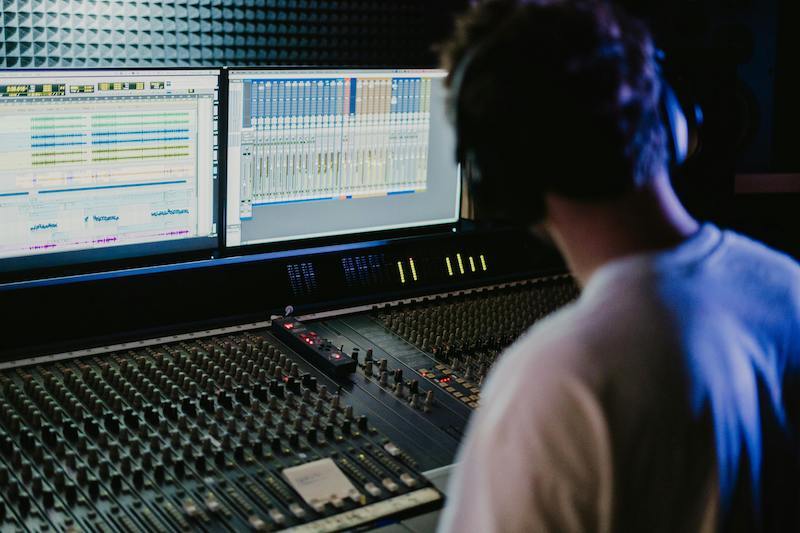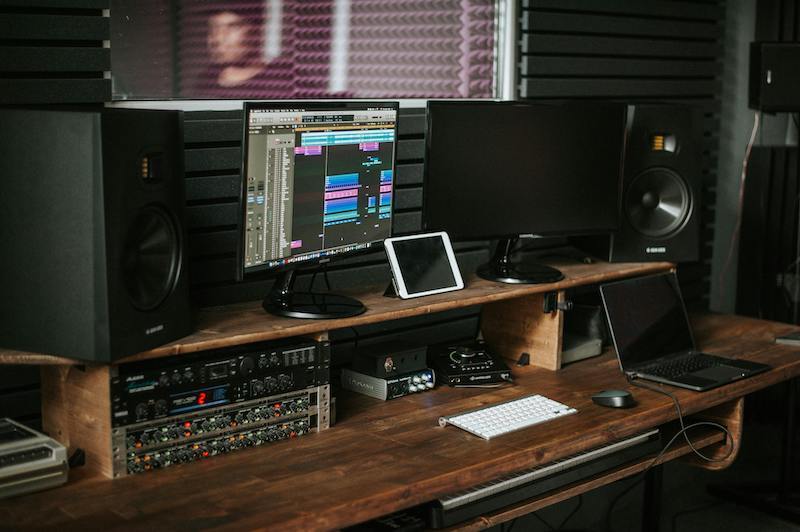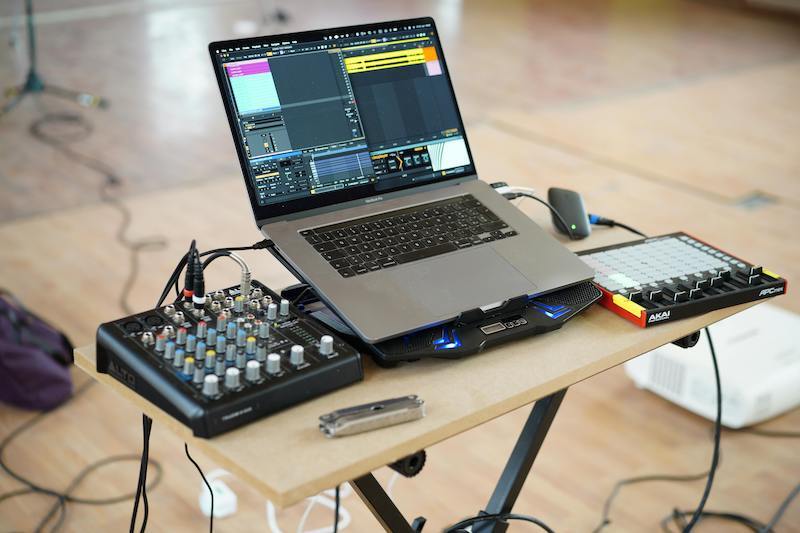Blog
How to Deal with a Lack of Creativity as a Music Producer
9 Oct '2025
Sometimes the work just isn’t flowing. Here’s how we recommend you make use of your off-days as someone who makes music for a living

Cover Photo by Cottonbro Studio
It might not seem like it as you look around the internet, but not every music producer is 100% creative, 100% of the time. The people you know, work with and follow, aren’t all piecing together tracks in a meditative flow state. Just like you, they have times when they can’t focus, won’t take their minds off something else, or don’t seem able to put together a tune to save their lives.
The difference between good working habits and great working habits isn’t about whether you have these days, hours or even weeks of being less creative; it’s about what you do with them. In fact, a smart producer can turn a dry patch to their advantage, using it to make the ground more fertile for creativity in the future.
In this article, we’ll take you through strategies, tactics and ways of thinking that can help you to turn that lost hour, or much longer, into something that helps rather than hurts.
Hold on, don’t feel guilty
When work isn’t flowing in the studio, our main and first piece of advice is to not worry, and to not feel guilty about it. Building up the significance like this can pile up emotional consequences, which can make your work seem like a huge event whenever you think about it.
But we can’t just say “Don’t feel guilty about it”, then drop the mic and walk away. You can’t flick a switch in your head to stop feeling bad about your lack of productivity, but we do have a helpful new perspective for you to look at things from…
There are different jobs for different sessions
Sometimes you’re in a creative mood to make music, everything’s flowing well, and everything’s great. But if you’re not feeling at your most creative, there are other things you can do instead – things that, by coincidence, will actually make you better at making music when you’re back in that creative mindset. Perhaps next session?

Credit: Anna Pou
Instead of laying down beats, you could spend the time to learn the ropes of a new piece of drum machine software. Instead of programming synth parts, you could spend the day on sound design, making new patches, or even going through the patches in your existing synths and favouriting ones you know you’ll want to use later. How about sorting out your samples so that next time you need to fish through your collection, you know everything’s in perfect order.
With the more boring, administrative tasks completed, you’ll hit the ground running when your creativity returns, and all thanks to that off-day.
Alternative jobs to do in the studio
When you’re unable to come up with anything good in your DAW, there are a few other tasks that will help you reap benefits later on. Consider these alternative tasks for days when the flow isn’t flowing.
Sort out your samples
We know a thing or two about samples here at Loopmasters, and we’ve prepared an article all about How to sort out your samples in the past. This should tell you everything you need to know about why to sort things out in your personal collection, and what considerations you can take to make a good job of it.
Come up with a great DAW template
How much easier would your producing life be if, every time you opened up a new DAW session, you had your most commonly used tools and tactics already loaded up and ready to go? That’s exactly the point of DAW templates, which most DAWs let you set up through their default project options, or simply by saving a project that you’ll load every time you open your DAW.
Do you always start a track by laying down a 4/4 kick? Put a sampler or kick plugin in the template. Do you always end up using the same reverb plugin on a bus? Put that in the template too. What’s your favourite sub bass synth? You’d better believe that’s going in the template.

Credit: Tima Miroshnichenko
While you’re considering making your own templates, check out Plugin Boutique’s offering of DAW templates, which can get you even further out from the starting gates in a variety of genres and DAWs.
Learn more about your DAW
It’s reasonable to think that you’d get faster at your DAW if you knew more about it and how it works. If you watch videos of professional producers online, one thing becomes clear: that most of them seem to know their DAW of choice like the back of their hand, operating it like a seasoned pro, using every shortcut and flying around different screens like it’s nothing.
At the very least, use your less creative moments to Get Better at your DAW’s Shortcuts, write them somewhere you can see them to start getting used to them later.
Improve your studio
Most people have a wishlist of aspirations and improvements for their studio space, whether it’s monitor wedges or an entire makeover for acoustic treatment – or both and more besides. There are plenty of improvements you can make to your setup, and they vary considerably in affordability. Check out 12 Small Ways to Improve your Home Studio Setup to get inspired with options that fall under your budget.

Credit: John Taran
Organise your plugin collection
Another one we know quite a lot about, being the sister company of Plugin Boutique, organising your plugins has quite a big effect on your ability to quickly implement your audio whims.
You could organise your plugins on the level of your DAW’s plugin management system, assuming it has one; or you could get it done at the root, by changing or removing things within the folders where you store plugins. Jobs include getting rid of plugins you don’t use or never used, removing format duplicates (VST2, VST3, AU…), or taking screenshots for your DAW’s browser, if that’s a function it offers.
Get your racks attacked
One of the most underrated production tools are racks. “Rack” is more of an Ableton Live term, but depending on your DAW, you may know them as Smart Controls (Logic Pro), Combinators (Reason) or other things. The main advantage of the ‘rack’ is to create a hybrid device out of multiple other devices – a formulation you can save and call up in future. Ableton Live’s drum racks, for example, let you save entire drum kits including effects chains per drum.

Credit: Giuseppe Di Maria
Most producers, who call on the same sorts of sound – drum kits, bass patches… – time and time again, will benefit from having their most-used combinations of tools ready-wired and close at hand.
Train your ears
There are multiple ways to improve your ear as a producer. The first is in your production skills, learning to recognise gain differences or frequencies in an EQ. The second is in music theory – getting yourself used to hearing different intervals or chords and recognising what they are, to be used later.
Fortunately, a few online programs exist to train both of these skills: try out SoundGym and EQ Academy to help build your production chops, and for ear training in the way of musicality, how about Tone Dear and ToneGym?

